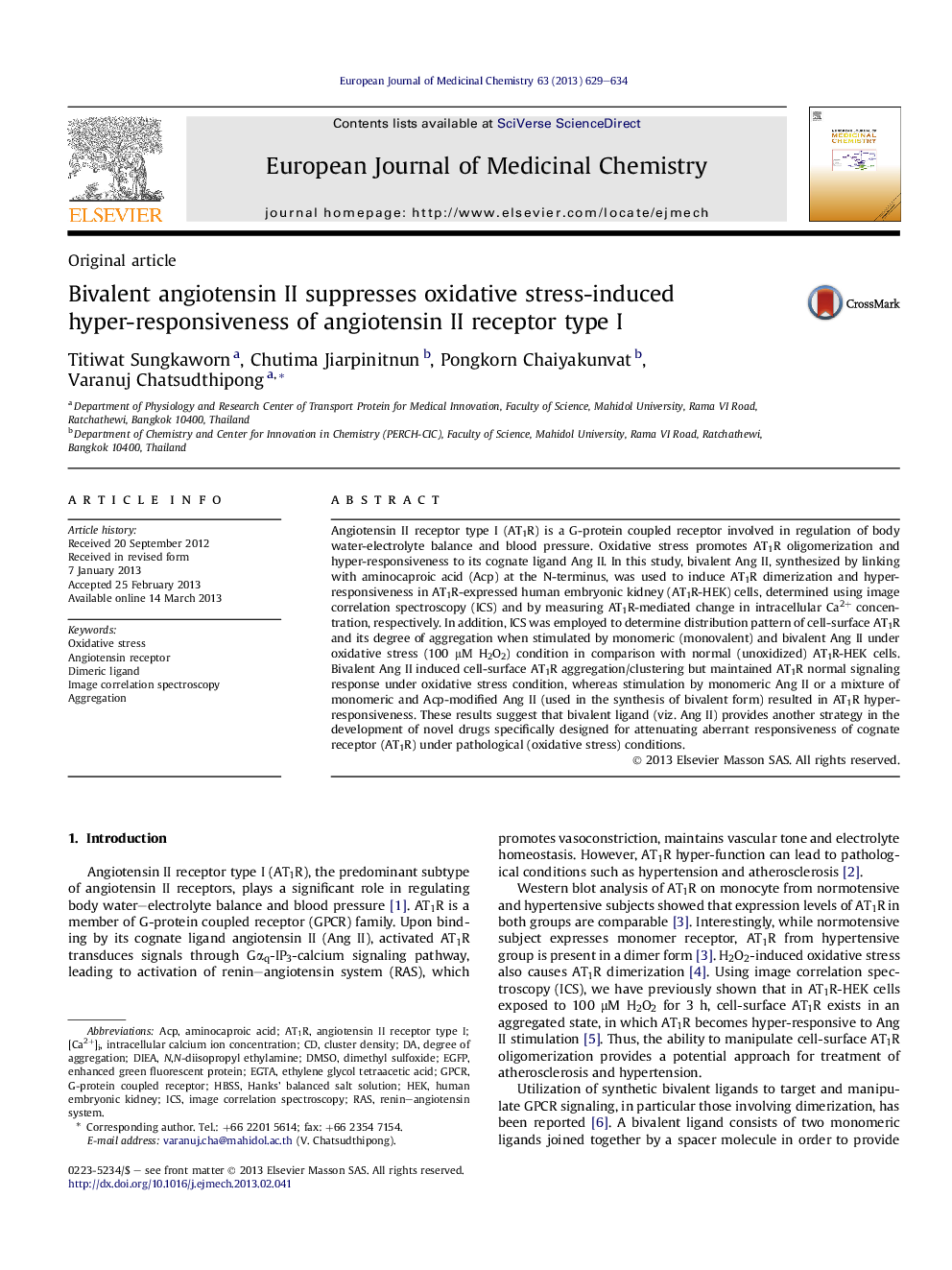| کد مقاله | کد نشریه | سال انتشار | مقاله انگلیسی | نسخه تمام متن |
|---|---|---|---|---|
| 1399212 | 1501153 | 2013 | 6 صفحه PDF | دانلود رایگان |

• Bivalent Ang II is firstly synthesized and used to target AT1R.
• Aggregation/clustering state of cell-surface AT1R was demonstrated by ICS analysis.
• Ang II caused aggregated and hyper-responsive AT1R in oxidative-stressed cells.
• Bivalent Ang II modulated AT1R distribution pattern on the cell surface.
• Bivalent Ang II showed ability to retain signaling response under oxidative stress.
Angiotensin II receptor type I (AT1R) is a G-protein coupled receptor involved in regulation of body water-electrolyte balance and blood pressure. Oxidative stress promotes AT1R oligomerization and hyper-responsiveness to its cognate ligand Ang II. In this study, bivalent Ang II, synthesized by linking with aminocaproic acid (Acp) at the N-terminus, was used to induce AT1R dimerization and hyper-responsiveness in AT1R-expressed human embryonic kidney (AT1R-HEK) cells, determined using image correlation spectroscopy (ICS) and by measuring AT1R-mediated change in intracellular Ca2+ concentration, respectively. In addition, ICS was employed to determine distribution pattern of cell-surface AT1R and its degree of aggregation when stimulated by monomeric (monovalent) and bivalent Ang II under oxidative stress (100 μM H2O2) condition in comparison with normal (unoxidized) AT1R-HEK cells. Bivalent Ang II induced cell-surface AT1R aggregation/clustering but maintained AT1R normal signaling response under oxidative stress condition, whereas stimulation by monomeric Ang II or a mixture of monomeric and Acp-modified Ang II (used in the synthesis of bivalent form) resulted in AT1R hyper-responsiveness. These results suggest that bivalent ligand (viz. Ang II) provides another strategy in the development of novel drugs specifically designed for attenuating aberrant responsiveness of cognate receptor (AT1R) under pathological (oxidative stress) conditions.
Figure optionsDownload as PowerPoint slide
Journal: European Journal of Medicinal Chemistry - Volume 63, May 2013, Pages 629–634